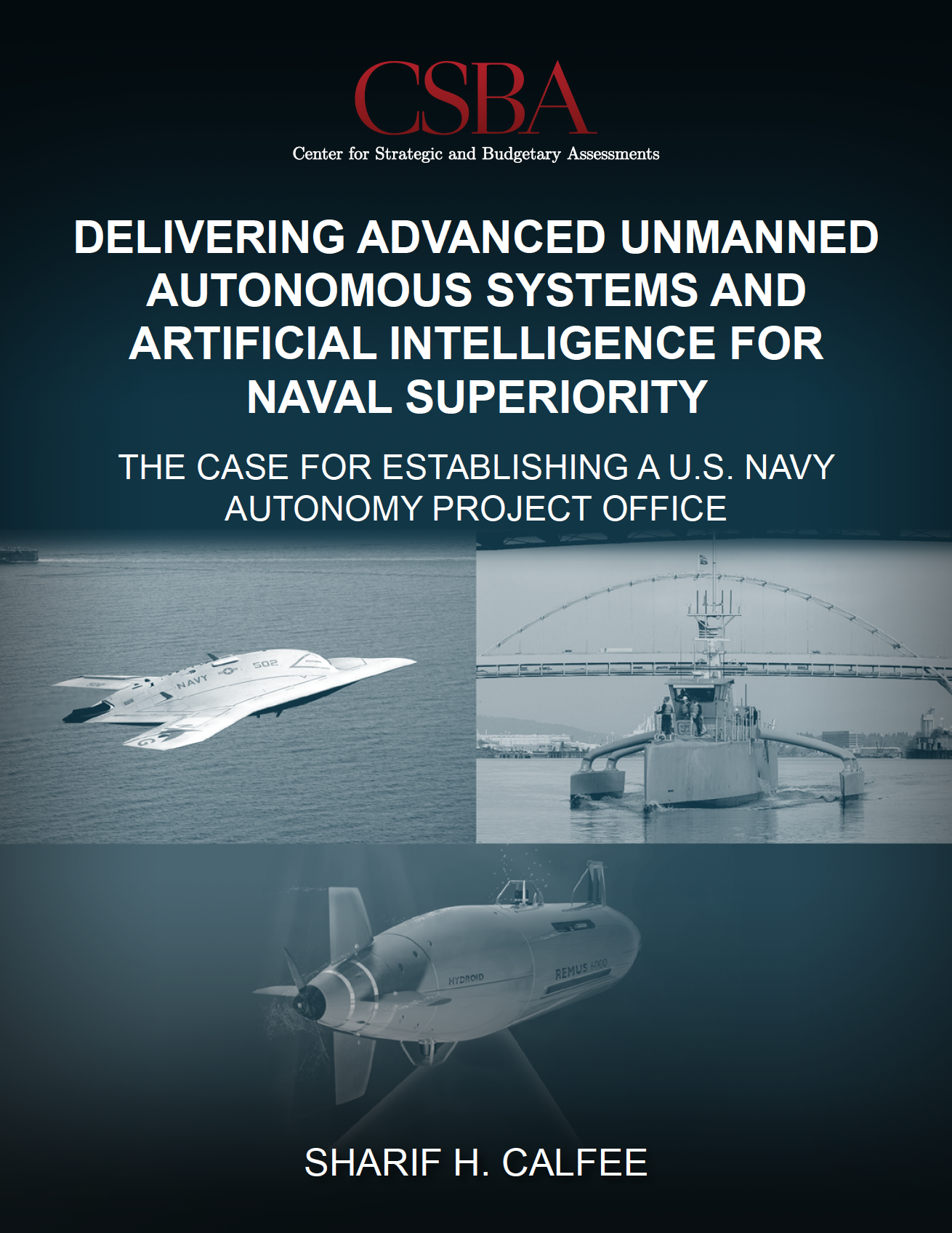In May, the Center for Strategic and Budgetary Analysis (CSBA) published Delivering Advanced Unmanned Autonomous Systems and Artificial Intelligence for Naval Superiority: The Case for Establishing a U.S. Navy Autonomy Project Office. The report, authored by CAPT Sharif Calfee, USN, proposes a single Autonomy Project Office, which would manage and direct all autonomous systems research, development, prototyping, testing and evaluation, and technology transition to the Fleet (2021). In short, the proposed framework radically departs from existing systems acquisition, programmatic, research and development, and technical roles and authorities. To support the proposed course of action, Calfee (2021) points to previous Navy efforts, such as deploying nuclear powered ships and the Aegis weapons system, as exemplars. According to the report,
The Department of the Navy has published a signed Strategic Roadmap for Unmanned Systems to develop the strategy and vision for deliberate R&D and procurement of unmanned vehicles. However, these plans could benefit from a comprehensive reorganization of the UxS R&D bureaucracy to transition the Navy to an optimal track for success. Without this restructuring, the existing structure may be insufficient for the task, hampering UxS technological progress. The following symptoms of this predicament were identified:
- Resource hyper-focus on some R&D Lines of Effort (LOE) and starvation on other critical LOEs;
- Lack of awareness of key organizational centers of expertise within R&D ecosystem;
- Bureaucratic, administrative, and risk-aversion impediments to R&D;
- Inconsistent processes to evaluate UxS R&D and S&T capability demonstrations for prototyping;
- R&D ecosystem inability to nimbly leverage emerging technologies; and
- Insufficient collaboration between Fleet operators and the R&D ecosystem. (p. ii)
It is unclear how the proposed Autonomy Project Office might fit with the Acquisition Executive Agent for Autonomy, which the Navy is required to designate by 1 February 2022. According to the National Defense Authorization Act (NDAA) for Fiscal Year 2021 (FY21), the Acquisition Executive Agent is to serve as “the acquisition executive agent for autonomy…with primary responsibility for the acquisition of autonomous technology [emphasis added].” Notably, neither the Navy and Marine Corps’ joint Unmanned Campaign Framework and Intelligent Autonomous Systems Science and Technology Strategy, both published earlier this year, were referenced in CSBA’s report.
For a copy of CSBA’s report, click Delivering Advanced Unmanned Autonomous Systems and Artificial Intelligence for Naval Superiority: The Case for Establishing a U.S. Navy Autonomy Project Office.
Calfee, S. H. (2021, May 25). Delivering Advanced Unmanned Autonomous Systems and Artificial Intelligence for Naval Superiority: The Case for Establishing a U.S. Navy Autonomy Project Office. Center for Strategic and Budgetary Analysis. https://csbaonline.org/uploads/documents/CSBA8260_(Navy_APO_Report)_web.pdf


